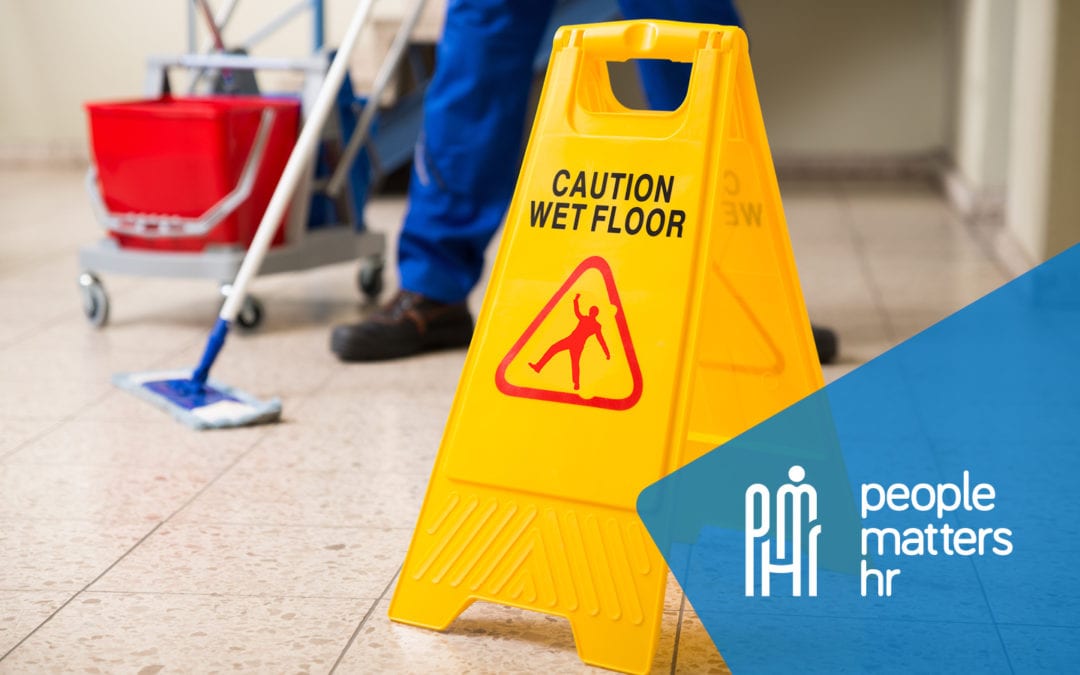Throughout this month, in the lead up to our FREE Seminar on Health and Safety Responsibilities for SMEs we are looking at various H&S topics. This week we wanted to tackle the infamous, and particularly common, hazards involving slips, trips and falls.
Slips, trips and even falls can be so common within workplaces because they occur so easily. In fact, the HSE suggests that up to a third of all major incidents fall in to this particular category. When you consider the weather within the UK it’s easy to understand how individuals walking in to a reception area with wet feet and dripping umbrellas can create an unsafe walking environment.
Whilst these situations occur so easily, they can actually be prevented just as easily. All that’s needed is a little bit of thought and some extra effort to help prevent them. Invariably, it is simply poor housekeeping that leads to an issue becoming an incident in the first place.
How can you prevent slips, trips or falls?
The first thing you need to do is consider all the ways in which such an accident could occur within your work environment.
What situations can you envision where a tiled floor area could become wet? Perhaps it’s a simple case of the example above, where weather plays a factor. Alternatively it may be that someone has spilt liquid on the ground.
What steps can you put in place to prevent these situations from occurring in the first place? Perhaps you could place absorbent mats or a carpeted “run way” in the entrance, to soak up any wet feet splatters. Maybe provide an umbrella stand where people can place their soaking wet brollies without having to bring them all the way in to the building.
These are good ways to prevent certain issues from occurring in the first place. They may, however, not always be enough. You’re surely not going to ban people from walking from the kitchen to their office with a drink, just on the off-chance they may spill some liquid. This therefore means you need to have a suitable response in place to deal with situations as and when they occur.
Look at ways you can improve your procedures, and ensure that all relevant staff are trained in what to do should they be the cause of a spillage or if they simply spot one. If, once the area has been suitably cleaned, it remains wet and is therefore still hazardous, make sure appropriate steps are taken. Have signs and/or barriers on hand to prevent people from walking on slippery floor surfaces until they have been suitably dried.
It’s also important that you look out for any areas where there may be specific trip hazards. Do you have uneven floors within your building, or loose carpets and tiles? If so, identify these and get these rectified as a matter of urgency.
What do you do about computer cables and other wires within the office environment? Are these safely covered, or do they snake across the floor? What are staff members supposed to do with their bags? Are they left next to their desks, causing a potential trip hazard? Do staff need reminding to keep them under desks, in drawers or in a locker room?
There are so many potential issues to consider, but if you simply take the time to walk around your work environment with an open mind, it’s entirely probable that you will discover most, if not all, of the hazards in the area. Common sense is then often the best way to deal with anything that does arise.
However, if you require any advice, or you have any specific concerns, please contact that team at People Matters HR.
